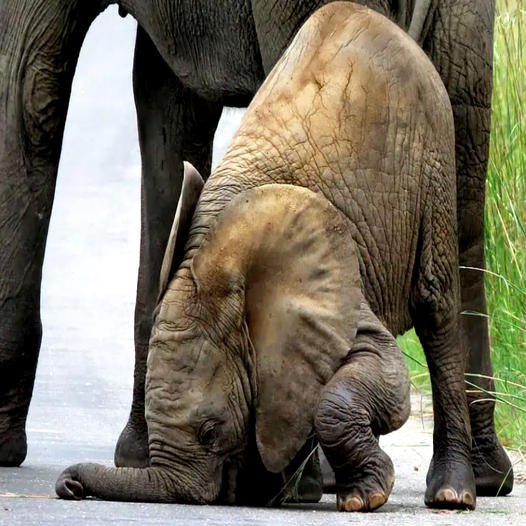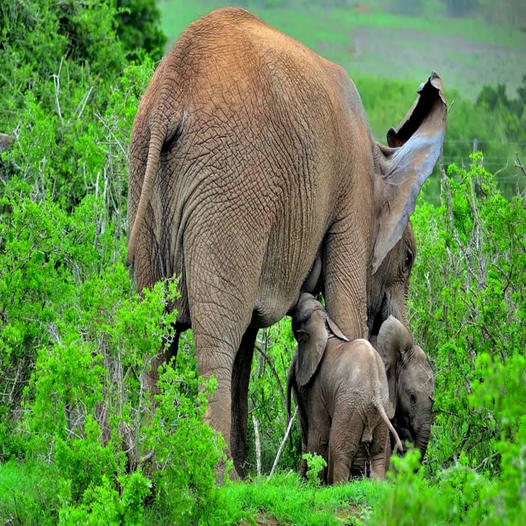The mesmerizing blue color that we often see in nature, like the vast blue sky or the deep blue sea, is truly captivating. Surprisingly, blue is a very uncommon pigmentation in nature, even though it appears abundantly on Earth. Only a handful of species, both in the animal and plant realms, can boast a genuine shade of blue.

Creating a blue rose has been a considerable challenge for a diverse range of individuals, including plant breeders, scientists, florists, and enthusiasts. Despite their tireless efforts, it has become evident that this unique and elusive flower cannot be found in nature or produced through conventional breeding techniques. The quest for the mythical blue rose has captivated individuals for years, prompting the age-old inquiry: why can’t roses display the enchanting hue of blue? In this enlightening guide, we aim to unveil the mysteries surrounding the unattainable blue rose and provide insights for those who share a fondness for blue flowers.

The blue rose has a rich history and countless tales that surround its mystique. Its origins can be traced back to the 12th century, when a renowned agriculturalist by the name of Ibп al-Awam mentioned an exquisite azure rose in his handbook. However, the existence of such a flower remains disputed, with some scholars suggesting that he may have been referring to the blue Hibiscus syriacus ‘Rose of Sharon’ instead. Despite the lack of conclusive evidence, the allure of this enigmatic bloom has sparked the creation of numerous folktales and legends.
One captivating legend that hails from China is the “Legend of the Blue Rose”. It recounts the fable of a young princess who set an impossible condition for her suitors – they must present her with a genuine blue rose in order to win her hand in marriage. Eager suitors attempted various deceitful tactics, such as painting a white rose with blue dye, crafting a rose-shaped sapphire, or conjuring a holographic illusion of a blue rose. However, the discerning princess saw through their tricks and dismissed their efforts as mere forgeries. She steadfastly believed that a true blue rose was a figment of imagination and did not exist in reality. Sadly, the princess was forbidden from marrying the gardener of the palace, whom she deeply cherished in secret.
However, fate had other plans in store for the princess and her beloved gardener. On the following day, the gardener presented the princess with a seemingly ordinary white rose. To the astonishment of all, as the princess tenderly touched the petals of the flower, a magnificent metamorphosis took place right before their eyes. The white rose magically transformed into a resplendent blue rose, captivating everyone present. Overwhelmed with joy, the princess and the gardener were finally free to marry and live happily ever after, defying the odds and proving that true love can indeed bring about miracles.
The enchanting tale of the blue rose continues to be recited through generations, captivating hearts with its message of hope, perseverance, and the profound power of love. Even if the blue rose remains an enigmatic wonder, its legend lives on, reminding us that sometimes it is the seemingly impossible that reveals the extraordinary.
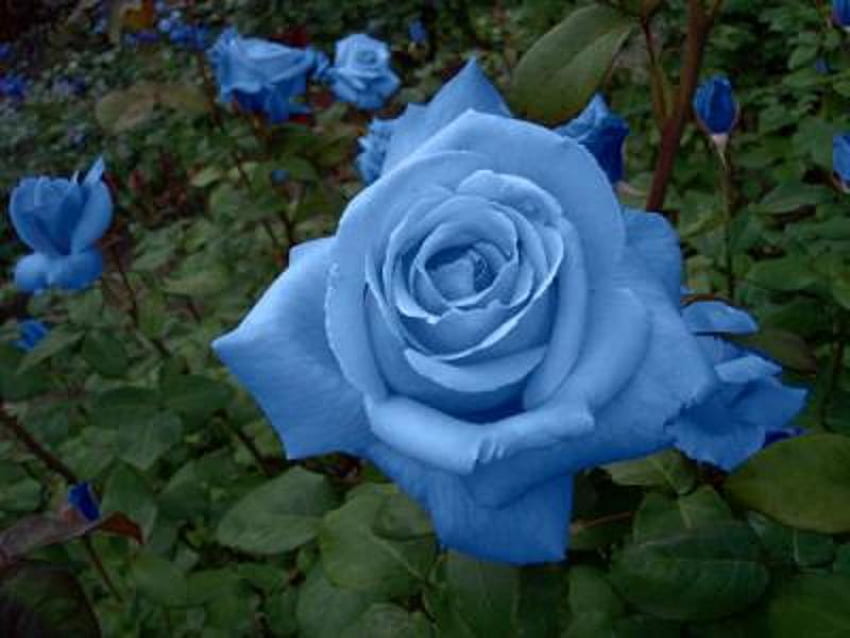
Finding a genuine blue rose is no small task, given that most blue roses on the market today are artificially dyed or painted. Natural roses lack the necessary plant pigment, called delphinidin, to produce blue petals. However, in 2004, a team of scientists from Japan and Australia achieved a major breakthrough in genetic engineering, unlocking the secret to creating true blue roses. They discovered that additional factors, such as co-pigments and the plant’s vascular pH, play a role in determining a rose plant’s ability to produce blue petals. By extracting the delphinidin-carrying gene from blue violas and irises and inserting them into white rose plants, they successfully generated stunning and stable blue blossoms. The initial blue rose variety, known as ‘Applause,’ made its debut in 2006 and was warmly received by the public. In 2018, another study revealed a simplified method of transforming white roses into blue ones by introducing enzymes-containing Agrobacterium tumefaciens into the rose petals. Although the resulting color is temporary, researchers are striving to enable the rose plants to produce the enzymes themselves. As the quest for the ultimate genetically modified blue rose persists, rose enthusiasts can still enjoy and appreciate nearly blue-colored rose cultivars that are widely available and much loved.

In 2006, a group of scientists achieved a remarkable feat by developing the world’s first officially acknowledged blue rose through the Suntory-Florigene technique. This extraordinary blossom not only emits a delightful fragrance but also showcases a captivating shade of mauve adorned with subtle tinges of red. Its stunning allure makes it highly sought-after as a popular choice for cut flowers in the market.
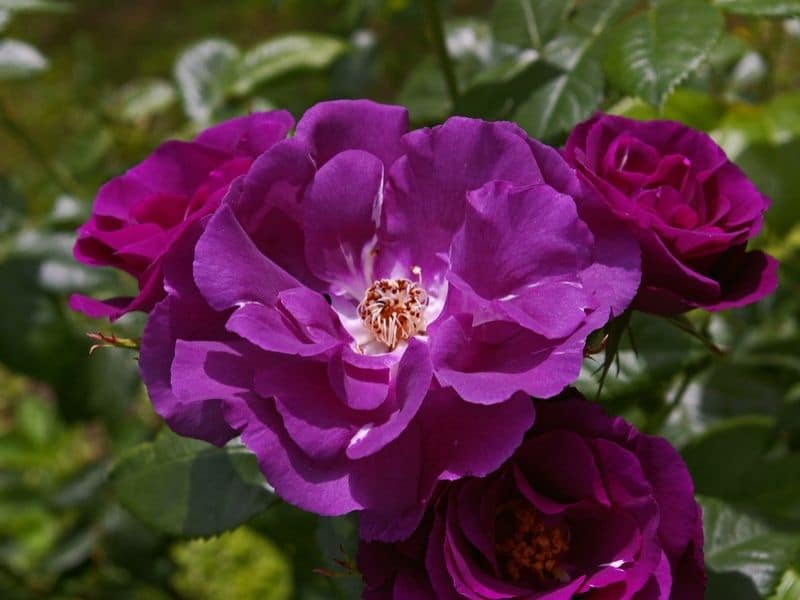
In 1999, Frank Cowlishaw created a rose plant through hybridization, which rapidly gained popularity for its stunning bluish-mauve petals and striking golden stamens when in full bloom. This rose variety is a repeated blooming shrub that grows tall and bushy, making it an ideal choice for landscape borders. With its distinctive deep purple hue, this rose stands out as it almost seems to possess a hint of blue, and it belongs to the gallica rose family. Originally discovered by Louis-Joseph-Ghislain Parmeniter in 1847, this rose is now frequently utilized by florists as cut flowers.
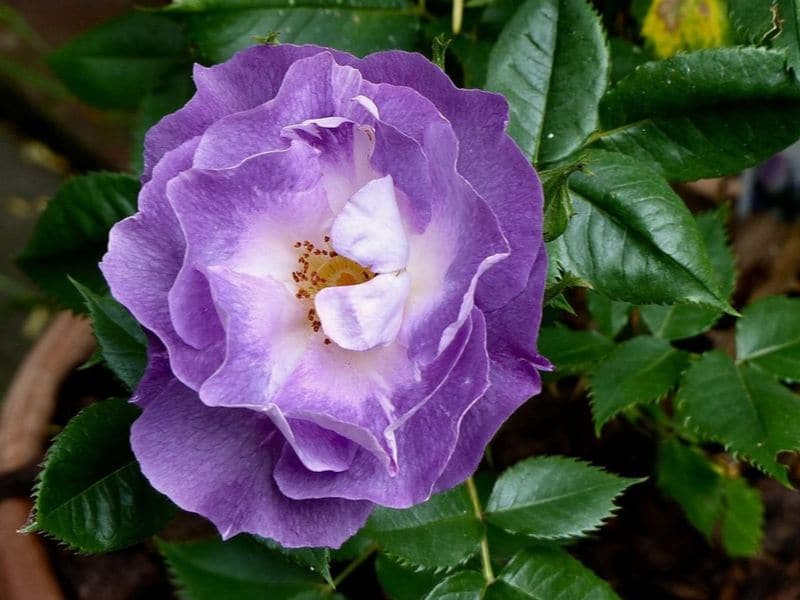
This specific variety of rose is commonly known as either ‘Pacific Dream’ or ‘Honky Tonk Blues’. The petals possess a stunning shade of purple with a touch of blush at the center. A talented hybridizer named Peter J. James created this exquisite flower in 2006, and it can reach a height of up to 1.5 meters when fully grown. Due to its unique characteristics, it is a favored choice for themed gardens.
Alternatively, this rose is also referred to as ‘Blue Violet’ or ‘Blue Rosalie’, which was meticulously hybridized by Johann Christoph Schmidt way back in 1909. The cluster of scented mauve flowers it produces is quite large, and the color gradually transitions to a mesmerizing blue hue. The leaves of this rose bush are a vibrant emerald green, and its stems are nearly devoid of thorns, making it a delight to handle.

